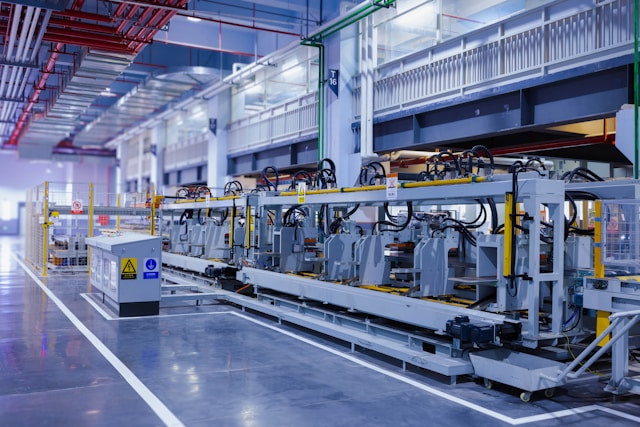
Manufacturers looking to successfully implement AI into their workflow understand that even the most innovative AI systems can’t deliver value without clean, consistent data. Without it, organizations will struggle to gain the right insights to make strategic decisions and increase efficiencies throughout. While many manufacturers understand the data challenges they face, they struggle with knowing how to resolve them.
Nearly 70% of surveyed manufacturers say that the data problems impeding their AI implementation stem from quality, contextualization, and validation. Despite decades of collecting information through legacy systems like Manufacturing Execution Systems (MES), Material Requirements Planning (MRP), and Enterprise Resource Planning (ERP) platforms, the data often isn’t in a state manufacturers trust to fuel AI initiatives. In fact, only 25% of manufacturers report having confidence in the data they collect.
That lack of trust makes the leap into AI-powered operations feel out of reach, especially for small and mid-sized manufacturers. Fortunately, there’s no requirement to jump straight into AI, giving organizations the opportunity to first improve the quality and strength of data to ensure it’s not only worthwhile, but that it’s strategic. That foundational work serves as a launchpad for AI readiness while driving immediate improvements in efficiency and decision-making.
Maximize Data Potential with Key Processes for AI Readiness
Manufacturers typically possess stockpiles of aging data provided by machines tracking order statuses, inventory levels, and production metrics. But often, these information streams are used only for basic reporting or, worse, aren’t used at all. On top of that, many organizations collect data in fragmented systems, resulting in disjointed and incomplete operational views. As a result, they miss out on real-time data and visibility, making the extraction of actionable insights for operational improvements nearly impossible.
Manufacturers grappling with data siloes and poor visibility have found some relief in Industry 4.0 innovations such as industrial IoT platforms, edge computing, and digital twins. These advancements harness the power of analytics and enable real-time information collection from multiple sources, including machines, orders, inventory and operators. Subsequently, faster decisions based on higher quality data are starting to reduce downtime, improve product quality, and slash costs.
Fully incorporating AI into manufacturing operations can be a gradual transition. Building a robust data foundation to set the stage for scalable adoption starts with a few simple steps, including:
- Auditing existing data: Examine the current state of data and confirm existing sources like MES, ERP, or factory sensors are capturing accurate and relevant information. If necessary, identify gaps or inconsistencies to ensure data tells the full story.
- Implementing real-time data collection: Modernize shop floors with IoT-enabled sensors, human-machine interfaces, and programmable logic controllers. These technologies ensure accurate, real-time collection to provide actionable insights on the fly.
- Standardizing data across systems: Consistency is king. Ensure formatting and definitions are standardized across different machines and systems to eliminate discrepancies and build trust in the data collected.
- Investing in advanced analytics platforms: Manufacturing apps or other advanced analytics solutions let users visualize key performance indicators in real-time. With a clear operational view, it’s easier to make confident, data-driven decisions today while laying the groundwork for AI tomorrow.
- Fostering a data-driven culture: AI success isn’t just about systems; it’s also about people. Encourage collaboration between teams to interpret and act on insights. Provide training for decision-makers to feel comfortable with analytics tools and, eventually, AI systems.
High-Quality Data Is Critical for AI
As manufacturers begin the process of assessing and implementing AI via data and analytics investment, they also establish a crucial foundation to unlock the full potential of AI tools. Feeding AI tools inconsistent or unreliable information leads to flawed insights and poorly formulated plans. In contrast, clean and accurate data empowers AI to drive meaningful improvements from the outset, which begins with training.
AI models must be taught using vast amounts of good data so algorithms can learn patterns, detect anomalies, make predictions, and avoid production errors . When trained correctly and given real-time inputs, AI tools can identify product defects, optimize inventory levels, and streamline workflows. In addition, many manufacturers get added support from custom applications that help in areas they’re most focused on, such as stock management, quality control, or maintenance. In all these instances, AI tools need tailored, targeted data to excel.
Predictive maintenance, which leverages machine data to anticipate breakdowns before they happen, is a useful example. A smart AI system can process vibration patterns, temperature spikes, and run-time hours to signal when a machine needs repair. This proactive approach reduces unexpected downtime and saves money on emergency repairs. In all areas, manufacturers that prioritize data quality are better equipped to successfully use AI and enable smarter, insight-driven decision-making.
Far From a Replacement, AI is a “Superworker” and Smart Economic Ally
Many small and mid-sized manufacturers worry that AI is out of reach due to cost or complexity, but this technology is not meant to replace workforces or require a complete operational overhaul. Consider AI a “superworker” that accelerates processes, identifies opportunities, and augments human decision-making, rather than replacing it. It’s not just a technological upgrade — it’s a smart, strategic investment.
Manufacturers are expected to invest $16.7 billion in AI by 2026, which underscores the undeniable return on investment. AI-powered tools are already helping companies improve product quality, minimize waste, strengthen cash flow, and streamline production schedules to better meet customer demand. With benefits this substantial, companies can’t afford to forgo AI adoption.
Overlooking opportunities to improve the consistent delivery of high-quality products means missing valuable chances to elevate customer satisfaction and strengthen brand loyalty. For manufacturers aiming to thrive in an AI-driven future, investing in first-rate data — and knowing how to fully harness it — is essential. The companies that can confidently collect, analyze, and act on trusted data will lay the strongest foundation for segueing to full digital transformation.



